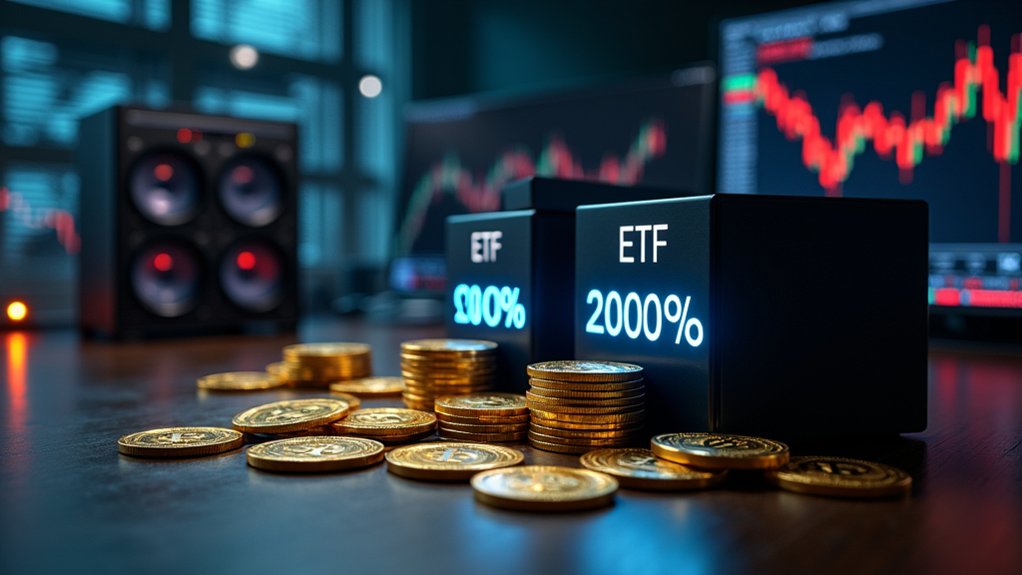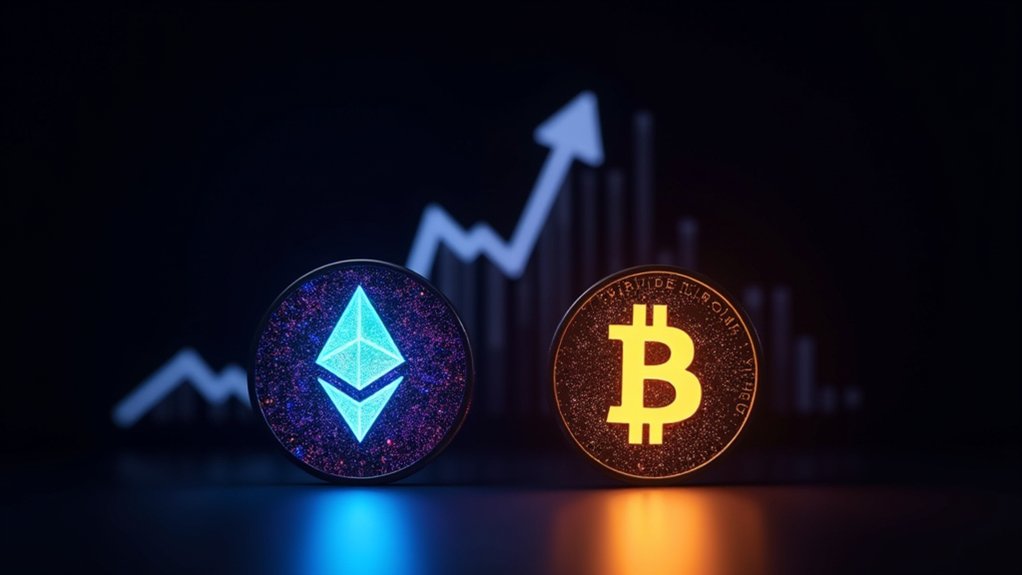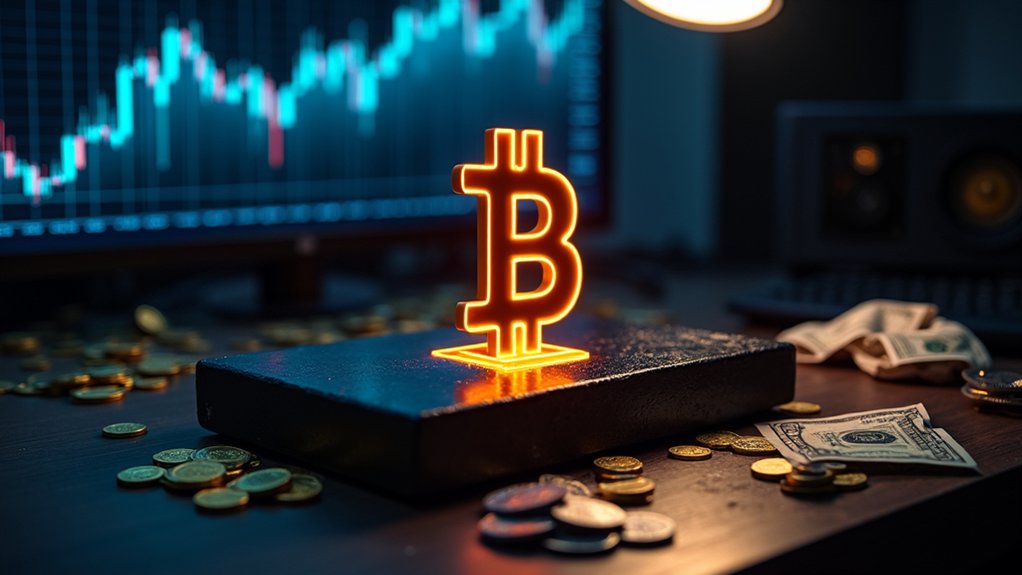How did a seemingly niche financial tool like ETFs ignite such wild chaos in the Bitcoin market? Picture a quiet Wall Street office, suits crunching numbers, suddenly swept into a digital gold rush. Spot Bitcoin ETFs, these shiny new toys of finance, buy actual Bitcoin to back their shares. In December 2024, U.S. ETFs snatched up 51,500 BTC while miners barely coughed up 13,850. That’s a jaw-dropping 272% more than what was dug up from the digital mines! It’s as if a hungry crowd stormed a bakery, grabbing every loaf before the oven even dinged.
Now, consider the price tag on this frenzy. Bitcoin’s supply is finite—capped like a rare vintage wine. When ETF demand surges, prices don’t just climb; they skyrocket. March 2024 saw Bitcoin hit $73,000, and by December, it soared to a dizzying $108,000. This surge was further fueled by the Bitcoin halving event, which reduced new token creation and intensified the supply-demand imbalance halving reduced supply. Additionally, global ETFs held over 1.3 million BTC by mid-December, representing a significant portion of the market held over 1.3 million.
Bitcoin’s finite supply, akin to a rare vintage wine, fuels a frenzied price surge as demand outstrips the digital vault.
Yet, there’s a flip side. When investors panic and yank funds out, as seen with massive ETF outflows, prices can crash below $75,000 faster than a dropped glass shatters. Similar to the 2020 halving peak when Bitcoin reached $69,000, market volatility remains a constant companion. It’s a rollercoaster, thrilling yet terrifying, leaving traditional investors clutching their briefcases while crypto enthusiasts cheer from the sidelines.
Liquidity, that slippery concept, gets a boost from ETFs too. Trading volumes swell on stodgy exchanges, smoothing out price discovery—like oiling a creaky hinge.
But Bitcoin’s wild swings can still jolt ETF performance, turning stability into a mirage. Massive inflows might cushion sell-offs, yet huge outflows? They’re like pulling the rug out, amplifying chaos.
Imagine the market as a tightrope walker, wobbling with every gust of investor sentiment.
Then there’s the looming “supply shock.” ETFs gobbled nearly four times the mined Bitcoin in December 2024, holding 6.24% of all BTC. With halving events slashing new supply, it’s like squeezing a nearly empty toothpaste tube—frustrating and desperate. Analysts whisper warnings of prices spiking further, while old-school skeptics mutter about bubbles. Could this clash of digital daring and cautious tradition redefine wealth? Only time, and perhaps a few more wild swings, will tell.









